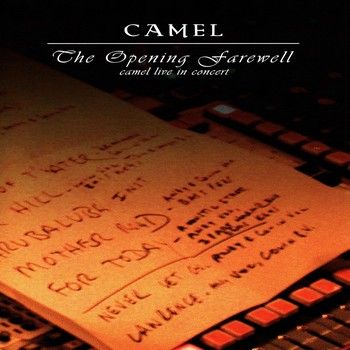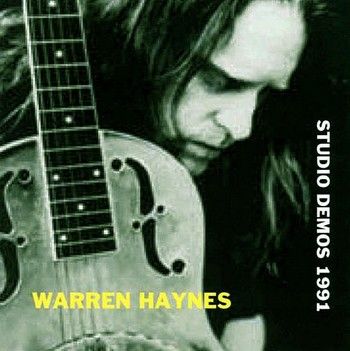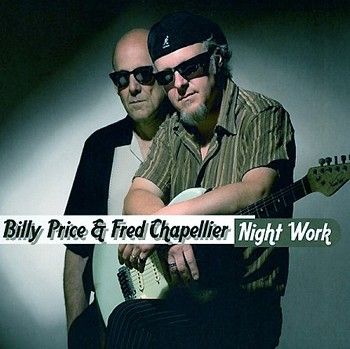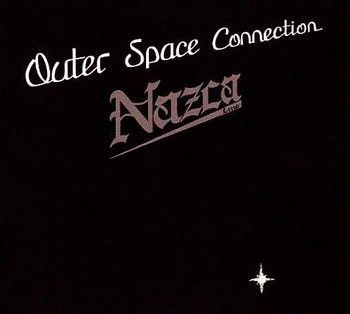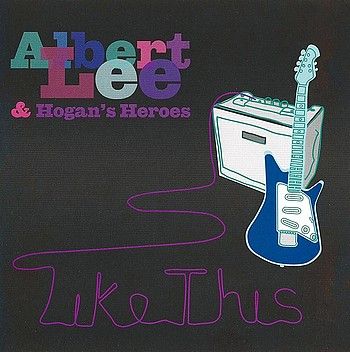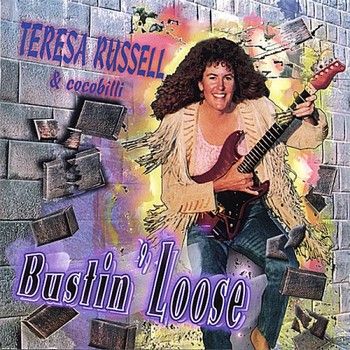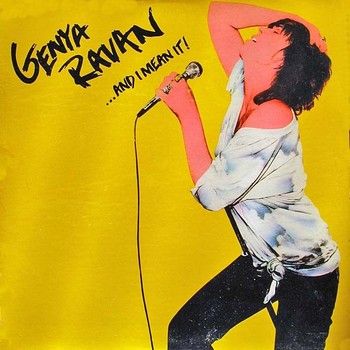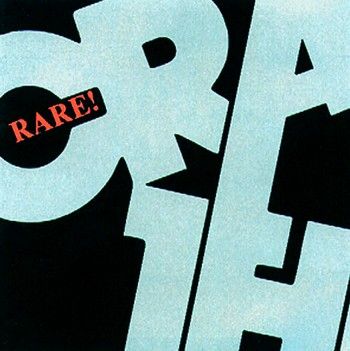
Crack The Sky - Rare! - 1994 - Yodelin' Pig
This release doesn't make a whole lot of sense. Although the truly rare CtS (at least for me) is the first four albums, this is a compilation of a couple of John Palumbo solo albums and "Dog City", "Raw" and "From the Greenhouse", the last three CtS CDs. The rest are live tracks (from 1988), outtakes from Palumbo solo and three demo tracks from "Safety in Numbers". These 7 tracks are indeed rare, while the rest could be scared up without too much trouble. The "Safety in Numbers" songs are okay, but not up to the par of the original album, and the live version of "Let It Be" pales in comparison to the rollicking version of "I Am the Walrus", which can be found on "Live Sky". Chalk this up as a disappointing purchase from a pretty talented band. Review by & © A. D. Jensen © http://www.newsandentertainment.com/zArare.html
"Rare!" is a great compilation album of singles and tracks from earlier Crack The Sky and John Palumbo solo albums. The album also contains live tracks, including two recorded at Hammerjacks nightclub between 1986 and 1988 as well as previously unreleased outtakes and alternate versions of songs. Most critics slagged off this release as old material repackaged. It is true that eight of the fifteen tracks were previously released - six from CTS studio albums, and two from John Palumbo solo albums. However, not everybody has heard all these tracks. Some of these albums are not easy to obtain and many CTS fans will not have heard the live tracks and outtakes on the album. If you are a CTS/John Palumbo fan you will probably enjoy hearing this album. Sound quality is ok but could be better. Many compilation CD albums are produced without using available remastered versions of tracks. This often means that some tracks sound better than others. If you are not familiar with the band's music listen to "Crack Attic (The Best of Crack the Sky)" and search this blog for other CTS releases. N.B: Link 1 of this post contains all the previously released material. The second link of this post contains the live, alt.versions, and outtakes, which you may prefer
TRACKS / COMPOSERS / TRACK INFO.
1. "Mr. President" - Palumbo - From Crack The Sky's "Dog City" (5:34)
2. "Love Me Like a Terrorist" - Palumbo - From Crack The Sky's "Dog City" (4:39)
3. "From the Greenhouse" - Palumbo - From Crack The Sky's "From the Greenhouse" (5:49)
4. "Lost in America" - Palumbo - From Crack The Sky's "From the Greenhouse"(4:12)
5. "Boilermaker" - Palumbo - From Crack The Sky's "Raw" (4:26)
6. "Mr. DJ" - Palumbo - From Crack The Sky's "World in Motion 1" (3:17)
7. "Drifting Back to Motown" - Palumbo - From John Palumbo's "Blowing Up Detroit" (4:21)
8. "Dancing With the Fuhrer" - Palumbo - From John Palumbo's "Victim of the Nightlife" (4:29)
9. "Monkey Time" (live or demo version) - Palumbo (3:07)
10. "Last Time" (live or demo version) - Palumbo (3:17)
11. "Crying Father from Idaho" (live or demo version) - Palumbo 4:23
12. "Jungle Man" (live or demo version) - Palumbo (4:49)
13. "Atlantic City" (live or demo version) - Palumbo (4:35)
14. "Blowing up Detroit" (live or demo version) - Palumbo (6:28)
15. "Let It Be" (live) - John Lennon, Paul McCartney (4:20)
MUSICIANS
John Palumbo - guitar, keyboards, vocals
Jamie La Ritz - lead guitar
Michael Taylor, Rick Witkowski, Bobby Hird - guitar
Jim Griffiths - guitar, vocals
Joe MacRe - bass, vocals
Cary Ziegler - bass
Rob Stevens, Vince DePaul - keyboards
John Tracey, Joey d'Amico - drums, vocals
Gary Lee Chappell - vocals
SHORT BIO
Progressive rock group Crack the Sky was formed in the Ohio River Valley region in 1975 by frontman John Palumbo, guitarists Jim Griffiths and Rick Witkowski, bassist Joe Macre, and drummer Joey D'Amico. According to the website at www.crackthesky.com, the band was originally dubbed ArcAngel, building a loyal following on the Cleveland and Baltimore club circuits before signing to the Lifesong label to issue their self-titled debut LP, which earned critical acclaim for Palumbo's acerbic lyrics and the songs' complex structures and time changes. Commercial reward was minimal, however, and after completing Crack the Sky's second LP, 1976's Animal Notes, Palumbo exited to pursue a solo career. D'Amico assumed lead vocal duties on 1978's Safety in Numbers, with singer Gary Lee Chappell featured on the Live Sky release. Crack the Sky then disbanded, but in 1980 Palumbo, Witkowski, and keyboardist Vince DePaul briefly reformed the group to record the White Music album before again dissolving. Palumbo then formed another new lineup for a series of albums including Photoflamingo, World in Motion I, and Raw before reuniting with Witkowski, D'Amico, and DePaul for a series of 1986 live dates at the Baltimore club Hammerjacks and eventually a new 1989 studio LP, From the Greenhouse. Dog City followed in 1990, and Crack the Sky infrequently reunited throughout the decade to come. Jason Ankeny © 2011 Rovi Corporation. All Rights Reserved http://www.allmusic.com/artist/crack-the-sky-p3977/biography
MORE
The band CRACK THE SKY started in the Ohio River valley (the members are originally from the Pittsburgh, PA area; John came from West Virginia to Pittsburgh). Originally named ARCANGEL, they became Crack the Sky when they signed with Lifesong records. They broke first in Pittsburgh, and eventually "emigrated" to and were "adopted" by the Baltimore, MD area. They recorded albums and played live shows with various personnel changes from the mid '70's until the late '80's. They played an original mix of quirky rock and roll with many time changes and switch-ups mixed in with a few Beatles-esque touches. Originally fronted by John Palumbo, the group's initial lineup also included Jim Griffiths (guitar), Rick Witkowski (guitar), Joe Macre (bass) and Joey D'Amico (drums). They were quasi-adopted by the Baltimore radio station, WIYY (98 Rock); this station above all others continued to play the classic hits from the band, and ended up sponsoring their reunion shows at Hammerjacks nightclub in 1986-1988. Their first album "Crack The Sky", released in 1975, was declared album of the year by Rolling Stone magazine, and contained such "cult" hits as Ice, Hold On/Surf City and She's A Dancer. Unfortunately, it never got promoted very well, and failed to catch on with the public. This was followed by their second in 1976, "Animal Notes", which contained such songs as Rangers At Midnight and Maybe I Can Fool Everybody (Tonight), was more quirky and less accessible than the first album, but good, nonetheless. Unfortunately it fared as well or worse than thier first album. John Palumbo left the band in 1978 during the writing of their third album, "Safety In Numbers", which resulted in songs on the first half of the album having words & lyrics by John, but the second half having words & lyrics by assorted (remaining) band members. John's leaving was "due clearly to a divergence in artistic direction." While many thought that losing John would damage the band, they were able to put together a good third album, followed by a tour which received rave reviews and produced their fourth, live album in 1978, "Live Sky". ("This band has come all the way down from an acid trip just to play for you...") This is an excellent example of the band live, with replacement vocalist Gary Lee Chappell, and credits (for the first time) Vince DePaul on keyboards, although he had played keyboards for the band on previous live outings. (I can't count the number of people I've talked to who saw Crack The Sky open for some band or other, and said that Crack basically blew the other band off the stage - that the headliner was a let-down after Crack played!) After Live Sky the band put out a greatest hits collection in 1980 titled Classic Crack. After leaving the band, John P. pursued a solo career, putting out the album Innocent Bystander in 1978. You can see the pain he was going through at the time, as many of the songs revolve around living through relationships dying (Dear, Dear), related change-of-life issues (It's Okay To Die, The Crying Father From Idaho) and also a song addressing how/why he left the band (Madness On Comet Way). After "Live Sky" the band broke up, but soon came back together in 1980 in their third incarnation of John Palumbo, Rick Witkowski and Vince DePaul to create the album "White Music", rumored to be a contractual obligation album. This album spawned such radio hits as All American Boy and Hot Razors In My Heart, and helped fans discover or renew their interest in the band. Unfortunately, soon after the album was released, the band broke up again, ostensibly for good. After that, in 1981, John once again re-formed the band in its fourth incarnation, with Vince DePaul (keyboards), Carey Ziegler (bass), Michael Taylor (guitar) and John Tracey (drums), and put out the album "Photoflamingo". This album received less-than-rave reviews from the critics and public, and today is one of the bands least well- known albums. As John wrote all the music and lyrics for the album, CRACK THE SKY began to become thought of as "his band", which caused him both joy and suffering for many years afterwards. The next offering from the band came in 1983 with "World In Motion I", yet another disappointment for the band. It never got much airplay other than Mr DJ, and the album itself was very hard to find in stores, eventually virtually totally disappearing from the record bins. The lack of acceptance of this album probably contributed to John again calling an end to the band, and the same year put out "The End", the bands supposed swan song. The album contained a collection of live songs from some previous albums as well as a couple of new (or previously unreleased) offerings. At this point, it seemed that CRACK THE SKY was finally gone forever, as John P. had grown to feel it like an albatross around his neck. He continued to pursue his solo career and released "Blowing Up Detroit" in 1984, which contained which contained such songs as Blowing Up Detroit and Drifting Back To Motown. Band members Carey Zeigler, John Tracey, Bobby Hird and Vince DePaul went on to form the local Baltimore band No Heroes, which played some Crack tunes as well as original tunes. Eventually, in 1986 John decided to make another CRACK THE SKY album, "Raw". He once again wrote all the words & lyrics, as well as produced the album. There were no previous band members on this album; the only other artist listed in the credits is Jamie LaRitz (guitar). Many fans did not deem this a "real" CRACK THE SKY album, as John was the only previous band member on the album. He apparently felt the tug of the CRACK THE SKY legend, or the laments of the fans, as he decided to resurrect the band for a series of live shows in 1986 at the Baltimore, MD club Hammerjacks. The band, consisting of mostly-original members John (guitar/vocals), Rick Witkowski (lead guitar), Joey D'Amico (drums/vocals), Vince DePaul (keyboards) and Carey Ziegler (bass/vocals) played three nights in March 1986 to an enthusiastic, sold-out audience. While they didn't play anything from "Raw" at these shows, there were two songs from the "Blowing Up Detroit" album, as well as most of the bands classic songs. They came back again in the Christmas Week in 1986 with a few more shows, this time incorporating the title track from "Raw" into the show. Possibly spurred on by the overwhelming reception the band received at the Hammerjacks shows, he continued to work with the other band members, and eventually did other live shows at Hammerjacks as well as another local Baltimore club, Painters Mill (before it burned down) in 1986 and 1988. Eventually, in 1989 there was a new CRACK THE SKY album named From The Greenhouse, featuring all of the members from the Hammerjacks shows except for Carey Zeigler, who was otherwise engaged during the recording sessions. (Carey did play with the band when they played more Hammerjacks shows after the release of Greenhouse.) This album featured the title track, as well as a critique of the American "yuppie" lifestyle in Lost In America. The band played more shows at Hammerjacks in support of this album. The same year John released his third solo album, "Victim Of The Nightlife". It contained a re-release of Drifting Back To Motown, as well as Dancing With The Fuhrer and a cover of Lou Reed's Walk On The Wild Side. (This is not surprising, as it's reminiscent of a song from CRACK THE SKY'S first album, She's A Dancer, which also talks about transsexuality issues. The next year, 1990, saw the release of the last (to date) studio album from the band, titled "Dog City", which didn't receive very much airplay, even from the local Baltimore radio stations. After this album, John once again dissolved the band to pursue his own projects. John went on to form a band named CRUEL SHOES and released a single album in 1993(?). This appears to have been a one-shot deal; I cannot find any curent information on this band. Finally, in late 1994 a new disc was released, titled "Rare!", containing a collection of singles from previous albums (both CTS albums and Palumbo solo efforts), live versions and previously unreleased alternate versions of songs -- outtakes from previous albums. This disc includes two songs recorded at two of the Hammerjacks shows. It was not received well by critics (panned as a rehashing of old material), but is a must-have for completists and true CRACK THE SKY/John Palumbo fans. In May and August 1996 the band played sets of shows at a small club in the Baltimore, MD area A.L. Gators. The band lineup is the same as on the album "The End"; John Palumbo, Rick Witkowski, Carey Zeigler, John Tracey, Bobby Hird, with the addition of Nat Kerr on keyboards. They also played the 2nd Annual COLT FESTat Merriweather Post Pavilion on Sunday, August 11th, 1996. CRACK THE SKY got back together again on May 31st, 1997 at Bohagers nightclub in the Fells Point area of Baltimore, MD. They played two shows, with the opening band being the Patty Reese Band, whom John Tracey also played with. (The Patty Reese Band played a drummer-less show.) Once again CTS wowed the standing room only crowd with two hours of their hits, including bringing back an old chestnut, Robots For Ronnie and a punked-up version of We Want Mine [ from & © http://www.crackthesky.com/library/ ]



